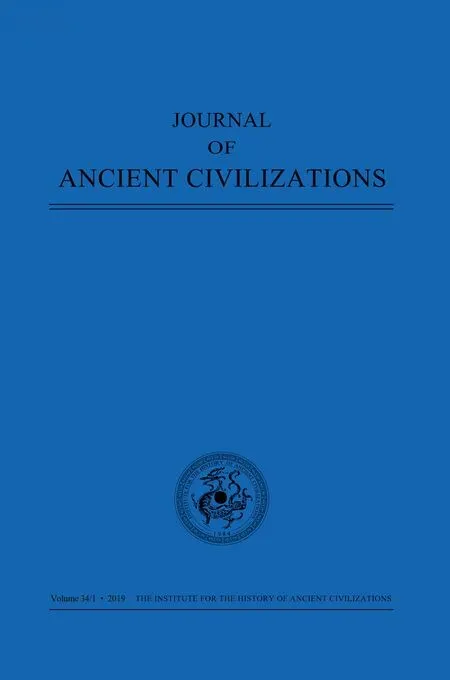ABSTRACTS
Michael Allen STEPHENS (Monash University)
A RECONSIDERATION OF THE ACCURACY OF THE REISNER CATEGORISATION SYSTEM OF EGYPTIAN WATERCRAFT HULL TYPES VI–VIII (pp. 1–19)
George Reisner, when categorizing the hulls and models of ships and boats in the Cairo Museum, developed a typological series of eight hull groups, Type I to Type VIII, covering the models and two surviving hulls in the Cairo Museum. He correctly stated that every type of model boat in the collection had parallels in tomb scenes. Inversely this was not the case; not all hull forms known iconographically were represented in the Cairo collection, as, for example, his Type III class – the papyrus rafts. Additionally, at least one class, his Type VII is demonstrated in this paper as being a group of assorted hull forms, rather than a distinct hull type. Despite these shortcomings, his eight categories have formed a basis for the categorization of Ancient Egyptian hulls. Reisner himself compounded the difficulty of categorization – in his introduction, he lists seven hull types, while elsewhere in his listing he includes the Type VIII.
Although intended only as a tool for cataloguing the models and hulls in the Cairo collection, his categories have been utilised for some one hundred years as a basis for the categorization of Egyptian watercraft. Although five of his categories are broadly correct, I propose in this paper that two of his types – Type VI and VII – are incorrect, and that his final category – Type VIII – should be renumbered or at best retitled. I also highlight some of the difficulties of having over-lapping or competing categories for Egyptian watercraft, and discuss where Types VI–VIII could fit in an expansion of a categorisation system for the Old and Middle Kingdoms as proposed by myself in 2012.
Katarina NEBELIN (University of Rostock)
INTERCULTURAL INTELLECTUAL CONTACTS: ARCHAIC IONIA AND THE EMERGENCE OF EARLY GREEK PHILOSOPHY (pp. 21–37)
It is widely accepted today that the emergence of early Greek philosophy and science has to be understood in the broader context of cultural contacts linking the Mediterranean, the Near East and Egypt. However, the social conditions of intellectual exchange between actors that belong to heterogeneous cultures of wisdom have seldom been studied in detail. In order to explain the way these interactions with foreign cultures might have fostered and stimulated the development of philosophical thinking in archaic Greece, it is therefore necessary to take a closer look at the social actors and the social spaces involved in this process. As one possible social space among others, sympotic feasts and banquets could have functioned as such spaces, for they provided relatively free and equal conditions of intellectual exchange.
P. J. RHODES (University of Durham)
THE ATHENIAN ASSEMBLY AND COUNCIL: CONTINUING PROBLEMS (pp. 39–67)
The council with its limited membership and the assembly open to all citizens were important elements in the public life of Athens, and indeed of most Greek cities, and how they functioned is an important part of what we need to know in order to understand their public life; but there are still questions to which we do not have certain answers, and in this paper I focus on them. Knowing about the mechanisms is not all that we need to know; but for a city whose mechanisms were well developed, as those of Athens were, knowing about the mechanisms, and the opportunities and the limitations which they provided for the men active in politics, is an important part of what we need to know.
RESEARCH SURVEY: ANCIENT LAW
Law is a key factor for understanding ancient societies. Though studies on law have often and for a long time been undertaken by legal historians, mainly in Law Departments, they did not substantially affect historical studies. This is particularly due to specific terminologies and frameworks of ancient laws, and modern attempts to systematize ancient legal cultures in a mere juristic sphere rather than to look at the respective historical context with specific political, social, economic, religious and cultural frames shaping and interacting with legal frames through persons involved in such processes. The present survey offers new perspectives and approaches to understanding the mutual interdependencies between law and the respective ancient society. Experts present theoretical and methodological considerations, recently discussed models and newly published research literature that might shape our understanding of ancient legal cultures in the next decades. In part 2, Daniel Justel looks at current trends in the studies of Ancient Near Eastern Law while Sandra Lippert combines a review of secondary literature with a critical survey of important sources regarding Ancient Egypt. Li Qiang surveys important developments in Byzantine Law Studies and offers insights into Chinese scholarship in this field.
Daniel JUSTEL(University of Alcalá, Madrid)
ANCIENT NEAR EASTERN LAW(pp. 69–81)
Sandra L. LIPPERT(CNRS, ASM 5140, Montpellier)
ANCIENT EGYPT(pp. 83–111)
LI Qiang(IHAC, NENU, Changchun)
RECENT STUDIES IN BYZANTINE LAW(pp. 113–124)
 Journal of Ancient Civilizations2019年1期
Journal of Ancient Civilizations2019年1期
- Journal of Ancient Civilizations的其它文章
- A RECONSIDERATION OF THE ACCURACY OF THE REISNER CATEGORISATION SYSTEM OF EGYPTIAN WATERCRAFT HULL TYPES VI–VIII
- RECENT STUDIES IN BYZANTINE LAW
- ANCIENT EGYPT
- ANCIENT NEAR EASTERN LAW
- THE ATHENIAN ASSEMBLY AND COUNCIL: CONTINUING PROBLEMS1
- INTERCULTURAL INTELLECTUAL CONTACTS: ARCHAIC IONIA AND THE EMERGENCE OF EARLY GREEK PHILOSOPHY
